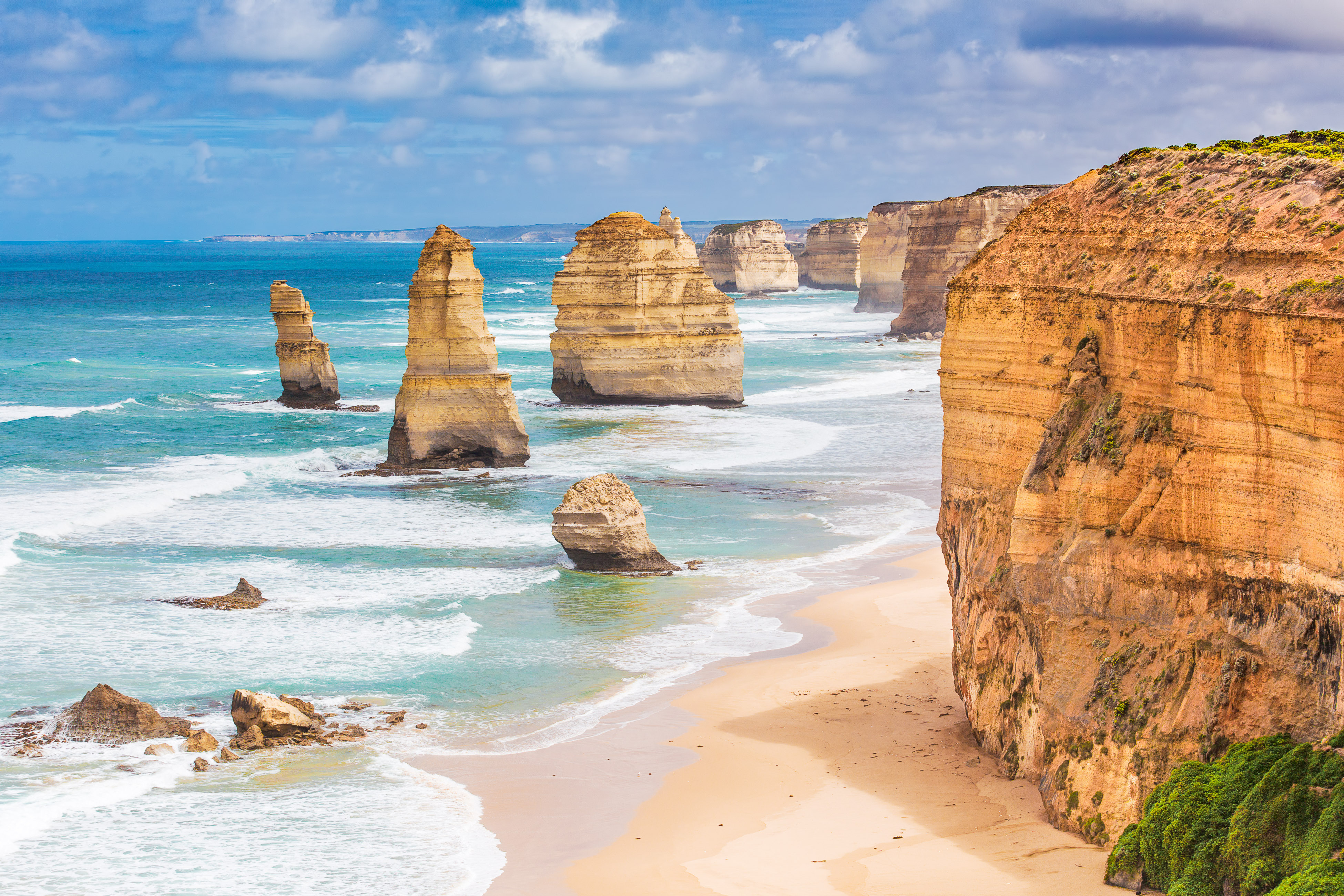Twelve Apostles are a series of rock formations in the Southern Ocean, near the Great Ocean Road alongside the Australian coast. The Great Ocean Road is a highway and national heritage site that spans part of the southeastern coast of Victoria, Australia. The Apostles are one of the most popular attractions viewed from the Great Ocean Road. 
The Twelve Apostles are made of limestone. They were originally connected to the coastal cliffs. Over time, erosion separated the rocks from the mainland and left them as freestanding pillars. Erosion is a natural process by which rock can break loose from Earth’s surface at one location and move to another. Each Twelve Apostle pillar, or “stack,” is about 150 feet (45 meters) tall. As erosion continues, the stacks are expected to shrink and new stacks to form.
The stacks, along with nearby Muttonbird Island, were known together as the Sow and Piglets throughout the 1800’s. Around 1920, the rock formations were renamed the Twelve Apostles. Historians think that this change may have been to promote the stacks as a tourist attraction. Despite the name, there have only been nine pillars recorded as part of the formation. In 2005, one of the nine pillars collapsed into the ocean. Remains of other stacks have been found deep underwater in the area around the Twelve Apostles. These collapsed stacks are known as the “drowned Apostles.”
Six stacks are visible from the mainland viewing platform, which is part of Port Campbell National Park. The park also hosts several other famous landmarks, including the Gibson Steps and the Loch Ard Gorge. The beaches near the Twelve Apostles are a habitat for a subspecies of the little penguin found only in Australia, New Zealand, and surrounding islands. The Twelve Apostles Marine National Park was established in 2002. The park protects about 30 square miles (75 square kilometers) of marine life around the stacks.
